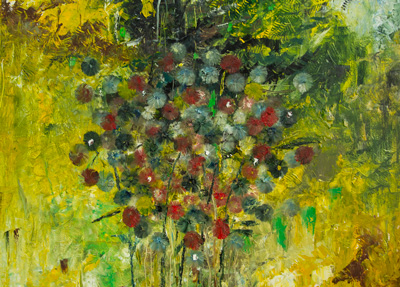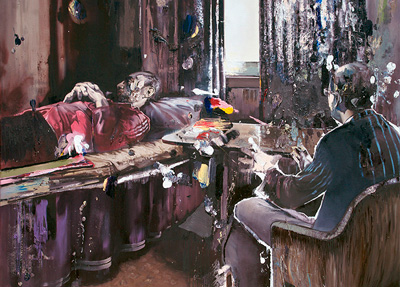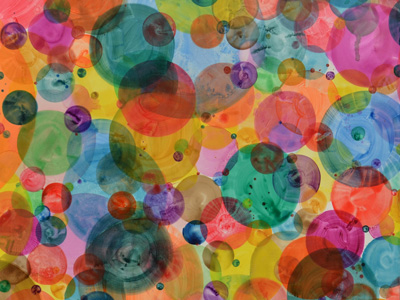The Challenges in a Good Portrait
By Dayneris Brito
The pure and simple “representation” of the “real”, the bare chronicle of “what
is” (or has been) thus appears as a resistance to the meaning.
Roland Barthes
The crisis of representation in art (already noticeable since the avant garde movements of last century) is no longer a theme that disturbs or stimulates the current symbolical production. For those of us embedded in current art and its diverse facets, the traditional seems to have succumbed in the face of the great wave of cultural postmodernisms restricted to the ephemeral, the perishable and the transitory existence of its concrete forms. But even when fine arts lose space in the era of the media and conceptual constructions, their presence is still an enriching experience for art lovers.
Perhaps for that reason (and for the candid, unselfish gesture in front of a sordid and extremist scenario) the works of Eric Alfaro Gómez (Moscow, 1991) are so attractive. This creator finds in the portrait the support to show himself as a true expert of the academic trend, appropriating all the elements leading to good painting. His art, still incipient, is that of a philanthropist who searches into human sensibilities and reveals through a realistic painting the tender gesture, the grumbling glance, or the insinuated eroticism. His interest in widening the craft and exalting the portrait as mixture of technical and formal knowledge results in the combination of novelty and tradition, recycling and authentic work.
In his series Flowers (2016) the flower is the distinctive element in each one of his models, and at the same time a mere pretext for the formal experimentation and aesthetic delight, exerting unwonted imitation. A naïveté at times persists in their faces, which is nothing but the means to reveal the secrets in the image: the sexuality and sensuality hidden in their candid poses.
On the other hand, in Needle (2017) he chooses to paint feverish images in detriment of the precious line, aimed at the nervous brush, dripping and strong pasting. Here the tattoos on the skin of his figures become metonymy of distortion and dislocation of a reality that appears as penetrating and incisive as the very action of the needle on the muscular tissues.
But if up to the present Eric Alfaro shows firm steps in his painting career, his poetic nature reaches perhaps higher levels in his black and white drawings. It is in this field that the artist finds himself and employs his drawing potentialities in an extraordinary way when imitating real faces selected from photographs and daily memories. His valuable technical mastery and keen-sightedness to capture moving and true gestures evidences a personal seal that, despite being figurative, does not lack space and sense. On the contrary: the representation is the result of a research prior to creation where a good pulse, knowledge of human anatomy and boundless imagination are outstandingly present.
Let us imagine that his standpoint is that of a chronicler of genres that places his figures on the borders of tracing to make them become characters with legitimate attitudes. That is why we perceive in his women a hedonism achieved by the aesthetic delight in their most sensual attributes (hair, lips, glance) and at the same time we see the humanized painter in his studio. Both paths will serve the artist to search between the formal renewal of the portrait and the addition of attributes to contribute to its full brilliance. Precisely in this coming and going is where Eric Alfaro finds his best achievements.



